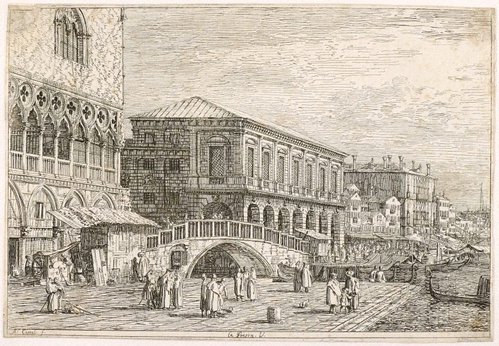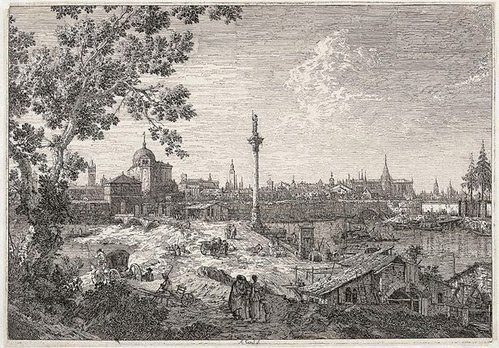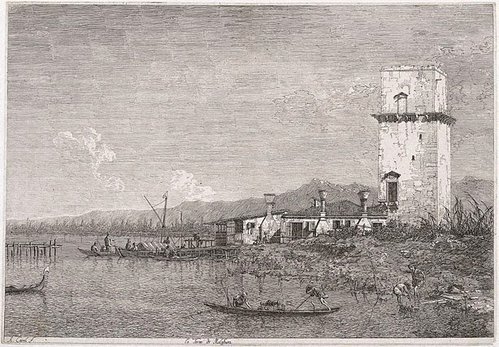Canaletto
Italy
Born: Venice, Italy 17 Oct 1697
Died: Venice, Italy 10 Apr 1768
Biography
Born in 1697, Giovanni Antonio Canal (called Il Canaletto or simply Canaletto) was the son of Bernardo Canal, a painter of theatrical scenery. He began his career working in this capacity alongside his father in Venice and Rome. In 1720 he became a member of the Venetian painters’ guild (the fraglia). However, he soon gave up theatrical painting and started producing capriccio (fanciful) views, which combine real and imaginary buildings and ruins in fantasy settings.
From these he turned in the 1720s to realistic views (veduta) of Venice which won him admirers especially among British visitors to the city. The most important was Joseph Smith, who acted as Canaletto’s agent commissioning works on behalf of British clients. When Smith was appointed British consul in Venice in 1744, Canaletto commemorated the event by dedicating his only series of etchings to his great patron. Smith himself formed a collection of Canaletto’s works, which he sold in 1762 to King George III with the consequence that the British Royal Collection contains the most important single group of the artist’s works.
Canaletto was particularly prolific in the 1730s. During the latter half of the decade and for some time in the early 1740s he was joined by his precociously talented nephew Bernardo Bellotto, who swiftly learnt to imitate his manner closely. In the early 1740s, partly as a result of the war of the Austrian succession, British patronage declined and Canaletto painted fewer Ventian veduta, devoting himself rather to etching and returning to capriccio views, such as his An imaginary view of Padua, which was a synthesis of observed and fantastic elements, and Landscape with ruined monuments c1741 which includes a pyramid. The Piazza San Marco, Venice 1742-6 is a magnificent venduta from this period. The piazza was a favourite subject of Canaletto’s and the artist depicted it numerous times, observed probably with the aid of a camera obscura. The view depicted in this painting though could not be experienced exactly as depicted in real life.
In 1746 Canaletto left Venice for England, where he was to remain, apart from two return trips to Venice (1750-2 and 1753), at least until 1755 painting views of London and the country houses of some of his patrons. Canaletto returned to Venice about 1755. He became a member of the Venetian Academy of Painting and Sculpture in 1763.






